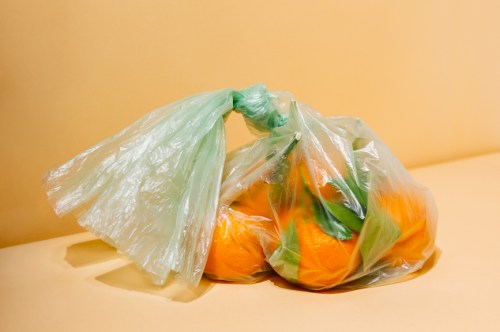On average, an American household spends approximately $8,289 on food each year and goes grocery shopping at least one or more times per week. This means that, along with the variety of yummy snacks we pick up at the store to nosh on, we also pick up a ton of packaging materials that will likely end up in the trash.
Experts in This Article
Although accumulating excess packaging from consumer packaged goods (CPG) is inevitable, a sustainability expert weighs in on how to grocery shop as consciously and environmentally-friendly as possible to help reduce harmful waste. Additionally, with simple modifications made in the items we choose to purchase while out shopping, we can help positively impact our planet and influence the key decision-makers that control the market. After all, you vote with your dollar and your fork.
5 tips for sustainable grocery shopping, according to an expert
1. Keep in mind the three R’s while shopping
According to Katherine Huded, vice president of Circular Ventures, it’s important to always keep the three R’s—reduce, reuse, and recycle—in mind when shopping. “Many grocery items require packaging to protect the products inside and reduce food waste,” she says. “To shop more sustainably, it’s important to keep in mind reduce, reuse, and recycle—in that order.”
Let’s break that down. Huded explains that the first R, reduce, is especially important when choosing which items to get. “Reduce packaging waste by buying in bulk, and consider buying items without additional wraps or packaging. Reusable or refillable models are also a good way to reduce waste. And last but not least, consider buying items packaged in common curbside recyclable materials, such as paper boxes, metal cans, glass bottles and jars, and plastic bottles, jugs, and containers,” Huded says.
2. Read the packaging labels
Another helpful way to shop sustainably, according to Huded, is by reading the labels on products to look for those made of the most recyclable materials. “And as a bonus, watch for items that have recycled content in them, which helps keep materials out of the landfill. Remember, you vote with your dollar, so every time you make a sustainable purchasing decision, it can have a real impact on improving businesses’ decisions.”
Huded also wants us to remember that though the chasing arrows recycling symbol can signify recyclability, it’s not always as straightforward as just chucking the waste into your curbside recycling bin. “The chasing arrows symbol denotes recyclability for most common household recyclables. For packaging that is not widely recyclable in residential recycling programs, instructions may be included, like ‘check locally’ or ‘return to the store,’” Huded says. If there’s confusion, she recommends looking out for things like the How2Recycle label, which helps clarify recyclability instructions.
3. Opt for packaging made of single-source materials
According to Huded, simplicity is key when it comes to grocery shopping. “The fewer combinations of materials in a package, usually the better. The recycling system is designed to take commingled materials and separate them into different commodities to return economic value for paper, metals, glass, and plastics. Packaging that combines many materials—like plastic and metal—into one makes the separation into commodities, and their resulting value, challenging,” she says.
4. Avoid single-use plastics as much as possible
Although it’s easy to forget until you’re at the checkout line, bringing reusable bags to the grocery store is a simple way to reduce unnecessary waste. “Reusable bags are often more durable and made with more material than single-use bags, so it’s important to reuse them many times over. If you do use single-use plastic bags, reuse them wherever possible,” Huded says. And although we sometimes tend to fall into the trap of wishcycling—aka tossing something into a recycling bin with the hope or wish that it’ll be recycled—not all materials are recyclable from the comfort of your home. Instead, most plastic bags need to be returned to retail locations that collect them (most aren’t accepted in most communities in curbside bins and can cause contamination if not properly disposed of).
5. Keep in mind that recycling is not a one-size-fits-all in every community
According to Huded, one of the most important reminders to note is that recycling information on the packaging is typically general guidelines. The best way to ensure recyclability, she says, is to check local policies.
“Packaging is often produced on a national scale and labeled according to its recyclability for the majority, 60 percent or more, of U.S. residents. Meanwhile, there are more than 9,000 local recycling programs across the U.S., and one size does not fit all,” Huded explains. “While most widely recyclable items like paper, metal, or plastic bottles are accepted in most recycling programs, it’s important to review the details of your local recycling program to see what is and is not accepted for recycling in your area.”
How to make your home more sustainable:
Sign Up for Our Daily Newsletter
Get all the latest in wellness, trends, food, fitness, beauty, and more delivered right to your inbox.
Got it, you've been added to our email list.











